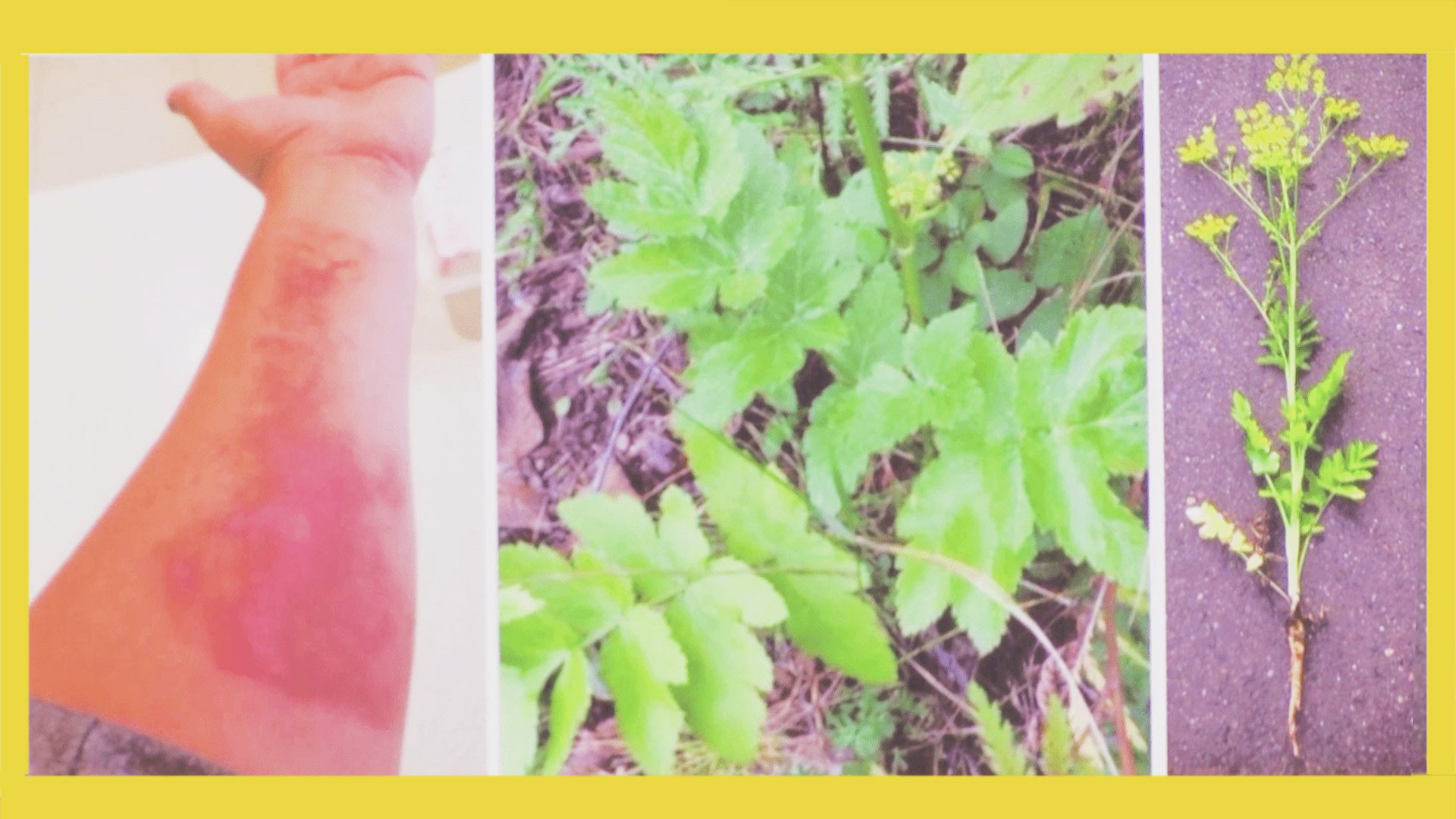Removing Wild Parsnip, identifying, and knowing the dangers
Most people know how to identify toxic plants like Poison Ivy, “Leaves of three, leave them be.” However, the Wild Parsnip is a less known invasive species that is spreading throughout the Northland.
Many volunteers in the Duluth area have been removing Wild Parsnip along trails and in parks to prevent people and pets from getting hurt. The toxic plant can leave severe burns and if you touch your eyes it can cause blindness. It’s important to take several steps are necessary when it comes to removing Wild Parsnip safely.
First you to properly identify the toxic plant. You can identify it by:
- Leaves alternate along the stem
- Yellow flowers
- Plant is between 4-6ft tall
- Usually located along roadways and trails
The plant is easily most identified roughly late June to early August, before it begins spreading their seeds in early fall.
“It is starting to really explode in our state. In Southern Minnesota, people know a lot about it, in other areas in Wisconsin, and whatnot. It’s really important just because of the health concerns to really educate yourself on the plant,” Lori Seele said.
Seele is the Coordinator for the Duluth Collaborative Invasive Species Management Area (DCISMA), and she says Wild Parsnip is dangerous to people and their pets out on the trails.

Wild Parsnip can cause significant pain and if the sap get into your eyes, it can cause blindness.
If you do identify Wild Parsnip, make sure to remove it properly by wearing long sleeve shirts, pants, and gloves. Seele said you can bring the plants to West Lake Superior Sanitary District (WLSSD).
However, make sure to tell workers at WLSSD, when giving them Wild Parsnip, that the plants are invasive.
“I think it’s really important that people can help prevent the spread of these and report them. So just help prevent the spread, clean your boots and gear and things like that and try not to spread it so much,” Seele said. “It’s important to not burn it too, because again, with the ingestion and even weed whipping, please don’t weed whack it. It’s really important to learn the best practices for handling these invasive species.”
Dr. Dylan Wyatt, an Emergency Medical Doctor at St. Luke’s, said the burn left by the toxic plant can take several days to heal.
“It sensitizes the skin of animals, including humans, to sunlight and makes us much more vulnerable to ultraviolet radiation to the point where we can actually be burned by that sunlight. And this is called Phytophotodermatitis,” Dr. Wyatt said.
Dr. Wyatt said keeping the burn away from sunlight, and using soap and warm water is the key with dealing the burn. However, if it worsens, do not hesitate to call emergency medical services.
“This isn’t one of the kinds of things where we want to use our good old fashioned northern Midwestern ‘I’ll rub dirt or Aloe on it and keep going.’ Don’t do that. This could be a really serious issue if you do. Taking a little bit of prevention will help prevent things from getting a lot worse.”
If you are looking to help with removing Wild Parsnip you can help out next week at 6800 Raleigh St.
Wednesday, July 19th and Thursday July 20th from 9am-11am. For more information about removing Wild Parsnip you can look here. However, for other stories about invasive species you can look here.